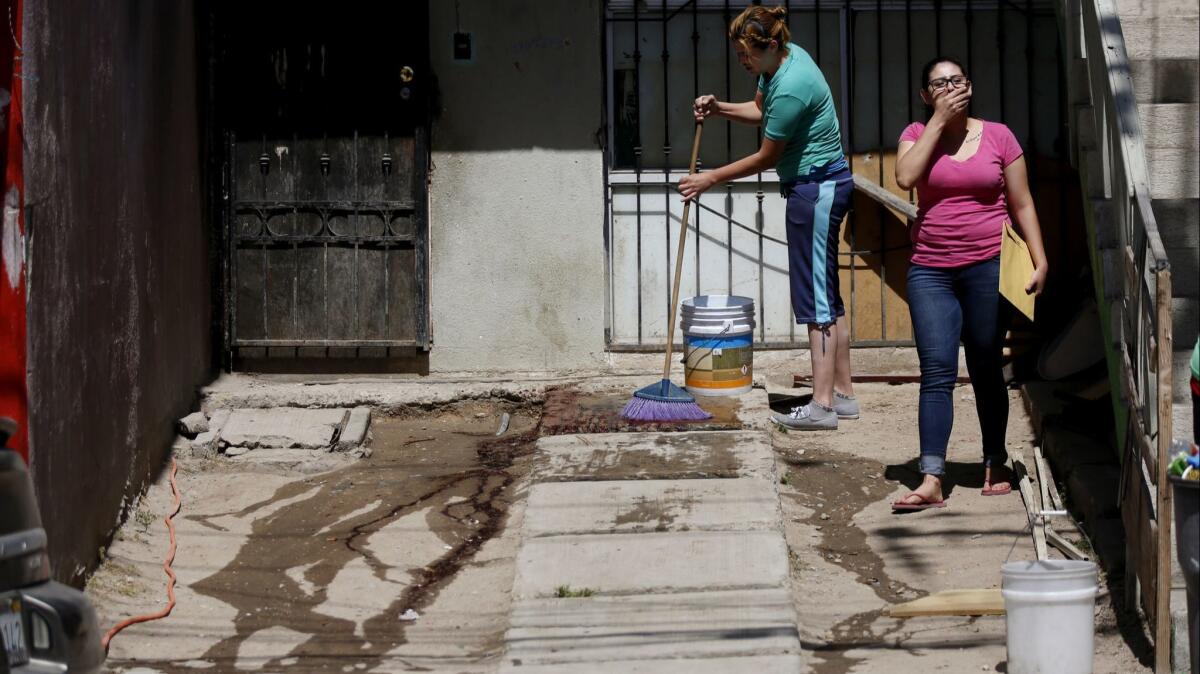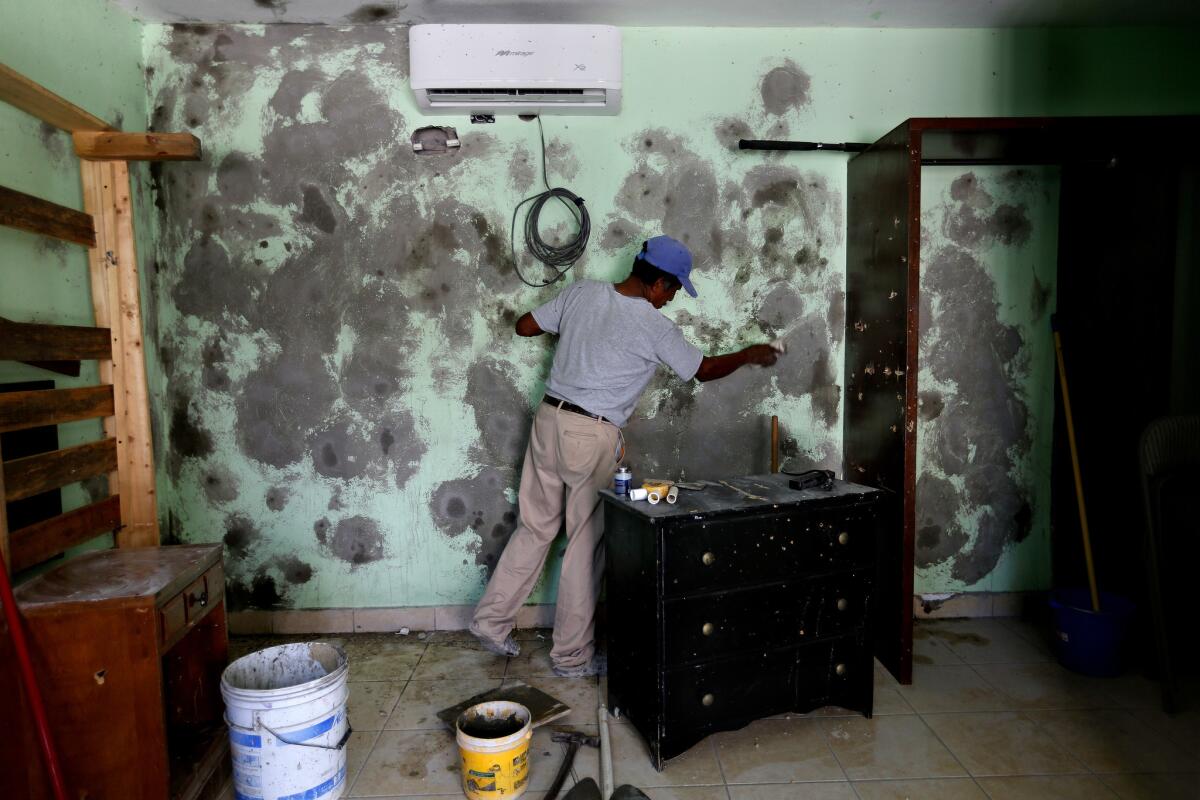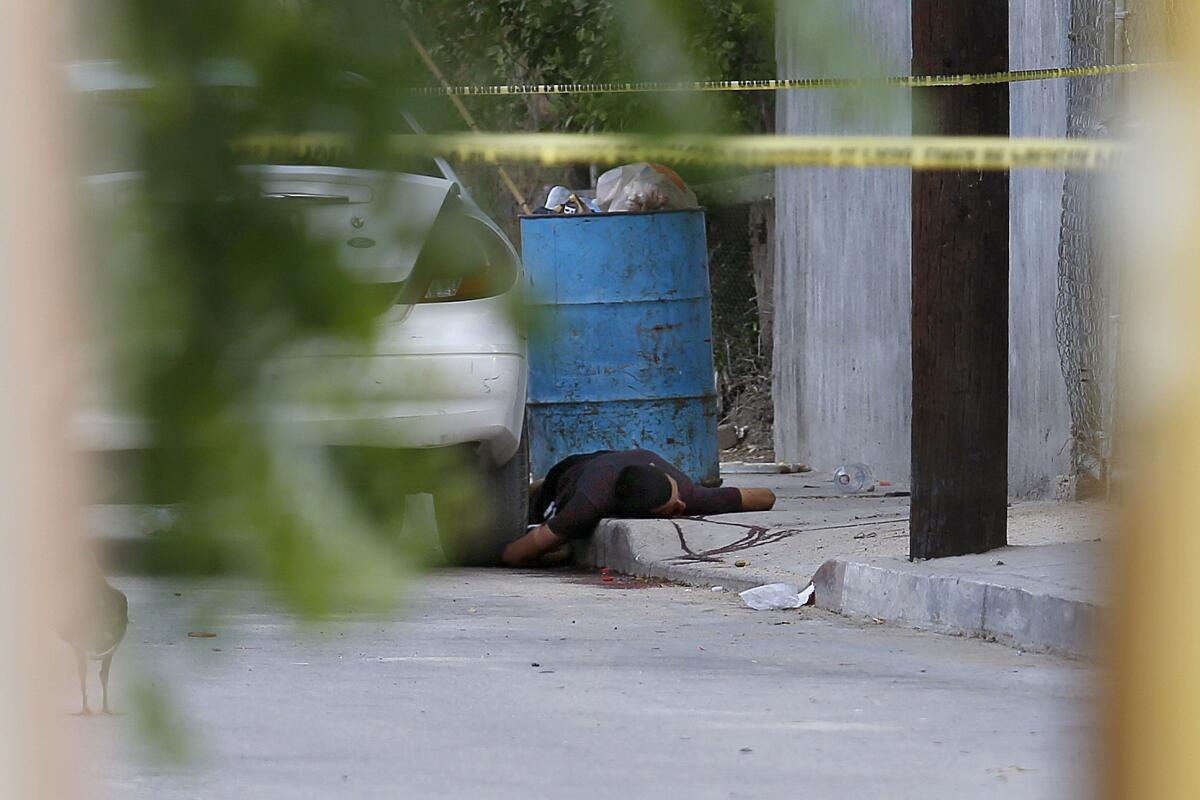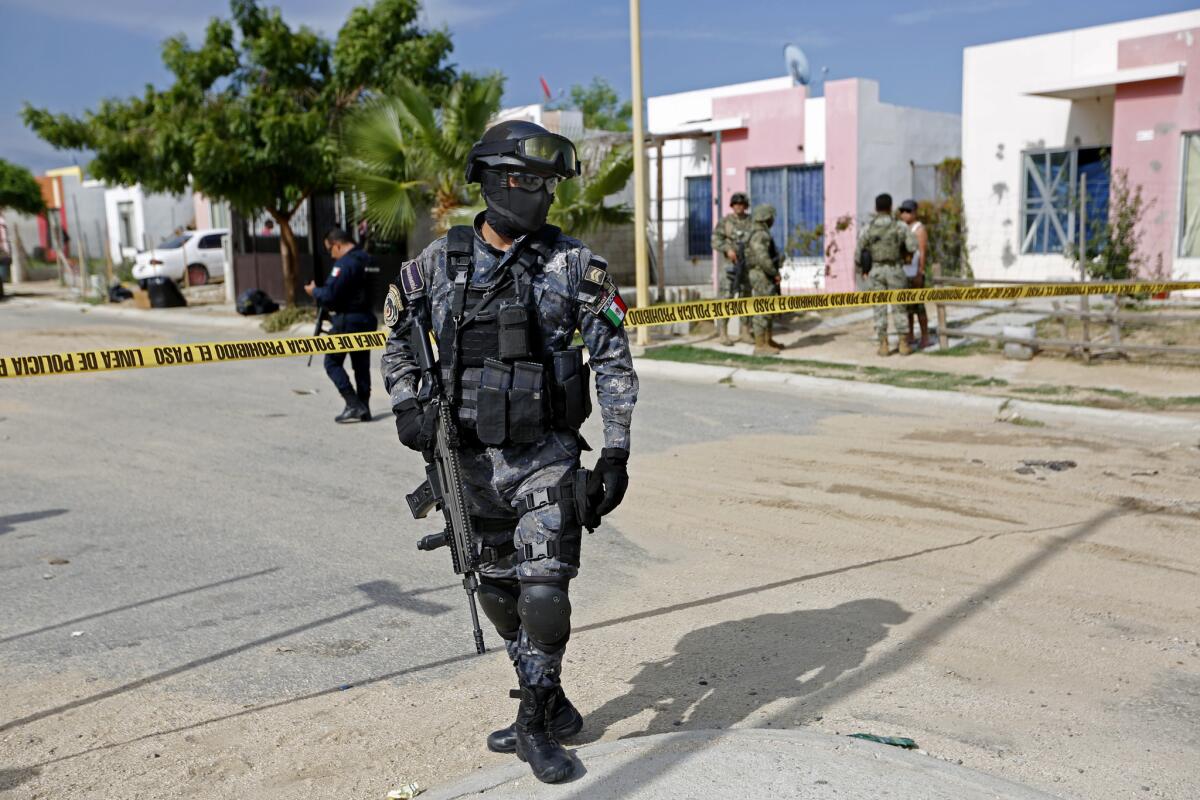Trump says Mexico’s violence is a threat to the U.S. Here are 3 ways the U.S. helps drive that violence

- Share via
Reporting from MEXICO CITY — President Trump tweeted about Mexico’s soaring violence this week, saying the United States must beef up its border security in response.
For the record:
6:15 p.m. Aug. 1, 2018An earlier version of this report referred to the Drug Enforcement Administration as the Drug Enforcement Agency.
He was referencing new data that show there were a record 31,174 homicides in Mexico last year — a 27% increase over the year before.
American law enforcement officials say there is no evidence that Mexico’s violence is affecting safety north of the border. A 2017 Drug Enforcement Administration report found that “while drug-related murders have reached epidemic proportions in Mexico in recent years, this phenomenon has not translated into spillover violence in the United States.” According to federal crime statistics, border communities such as San Diego and El Paso are among the safest cities in America.
Still, Mexico’s rate of 25 homicides per 100,000 inhabitants is higher than at any point in Mexico’s modern history. Although that is lower than the rate in El Salvador, which saw 60 homicides per 100,000 people last year, it far surpasses the rate in the United States, where nationwide there are five homicides per 100,000 people.
While the country has made meaningful reforms to its criminal justice system over the last decade, badly trained police and chronic government corruption contribute to widespread impunity by criminals. Roughly 4 out of 5 homicide cases in Mexico go unsolved.
Although factors within Mexico fuel much of the violence, the U.S. is helping drive Mexico’s rising homicide rates as well.

American guns
There is only one place to legally buy guns in all of Mexico — a heavily guarded store on a Mexico City military base.
It takes months to apply for a gun permit, and buyers are limited to acquiring only one handgun each.
How is it then that Mexico, which has some of the world’s strictest gun laws, also has the world’s highest rates of gun-related deaths? The answer lies north of the border.
An average of 253,000 guns purchased in the United States are smuggled into Mexico each year, according to a study by University of San Diego’s Trans-Border Institute and the Brazil-based Igarape Institute.
Those guns, which are often purchased legally in the U.S., are directly driving Mexico’s violence. About 70% of guns recovered by Mexican law enforcement officials from 2011 to 2016 were originally purchased from legal gun dealers in the United States, according to the U.S. Bureau of Alcohol, Tobacco, Firearms and Explosives.

American appetites
Another driver of unrest in Mexico is the growing appetite for opiates in the United States. Increased production of poppies and the synthetic drug fentanyl have triggered turf wars in states such as Michoacan and Guerrero, experts say.
While past U.S. presidents, including George W. Bush and Barack Obama, acknowledged the role that U.S. demand for drugs plays in Mexico’s violence, President Trump has complained that Mexico “sends” drugs across the border.
His administration has taken a generally punitive approach to reduce drug use, increasing penalties for users and dealers while repealing provisions of the Affordable Care Act that allowed addicts access to medical treatment for addiction.
The U.S. approach to drug farming in Mexico has also been punitive, with the U.S. helping fund eradication efforts around the country. But those have been largely unsuccessful because drug growers tend to live in impoverished rural areas where access to other kinds of work is limited. Result: Even if marijuana or poppy crops are destroyed, farmers replant when they can.

American strategy
For more than a decade, the U.S. has been intricately involved in Mexico’s fight against drug traffickers.
Under the Merida Initiative, a bilateral partnership forged in 2007, the U.S. spends about $100 million each year to help train police, spur improvements of prisons and jails and fund other programs.
U.S. law enforcement officials have also been involved in shaping Mexico’s “kingpin” strategy, which targets the powerful leaders of drug cartels. One by one, often with the help of U.S. intelligence, Mexico has helped take down leaders such as Joaquin “El Chapo” Guzman, the notorious leader of the powerful Sinaloa cartel.
But many believe that strategy has had the unintended effect of spurring more violence.
Taking out the leaders of power groups “only makes things worse because it constantly generates leadership succession struggles and encourages new turf wars,” academic Vanda Felbab-Brown wrote in a recent report for the Brookings Institution think tank.
Guzman’s arrest and extradition to the U.S. sent his cartel into chaos, with bloody battles for control playing out in states across Mexico. It also created an opening for a new ascendant drug gang: the brutal Jalisco New Generation cartel.
Twitter: @katelinthicum
More to Read
Sign up for Essential California
The most important California stories and recommendations in your inbox every morning.
You may occasionally receive promotional content from the Los Angeles Times.











